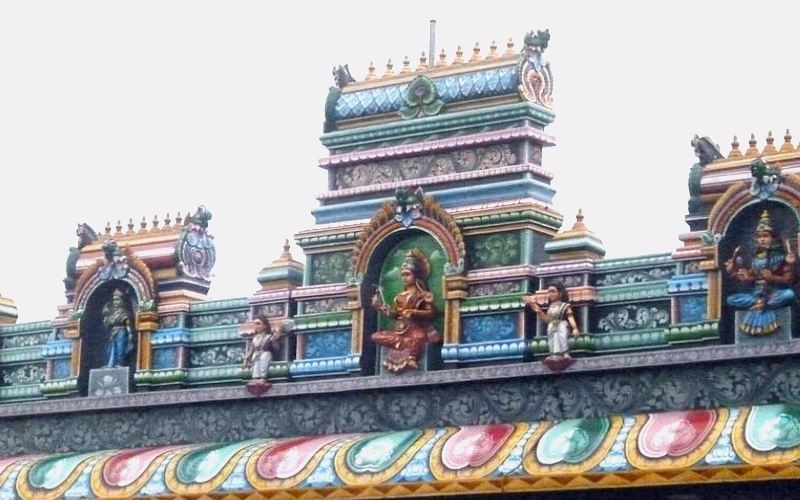
I still remember my half-yearly holidays of 1979. The big breaks were known as quarterly, half-yearly, and annual holidays. My father, K. Govindarajulu; mother, G. Ararvindakumari, brother Suresh, Subramaniam uncle and I, once went out on a long holiday. We began one afternoon in December on Sathyamangalam Road. Our first stop was the Bannariamman Temple. It was my first visit to that temple.
Father told us that the one who enters the Dhimbam Ghats would always seek the protection of Bannariamman. We moved through the ghats and reached Chamrajanagar in Karnataka. The ghat-roads were wonderful, and it was the home to many wild animals, which included the tiger and the elephant. We whizzed past Chamrajanagar and reached Nanjangud. The famous Nanjundeshwara Temple located at Nanjangud happened to be the family temple of our cousins at Bangalore, the family of Pathi Vittala Bai and Radhakrishna.
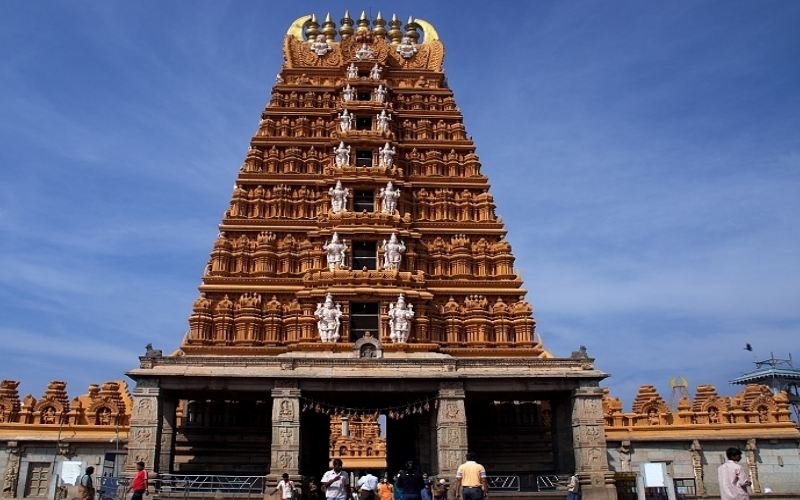
We had a good darshan of Lord Nanjundeshwara and we reached Mysore for our night hault. Our stay was at the iconic Hotel Dasaprakash. The next few days kept us happily busy. We visited the Mysore Palace (Amba Vilas), the Rail Museum, the Jaganmohan Palace, Krishna Raja Sagara Dam, and the Chamundeshwari Temple (Located on a nearby hill). Father took us to the Lalitha Mahal Palace Hotel, and we were completely enthralled.
Our parents told us about Goddess Chamundeshwari along with other stories connected with the ‘Devi Mahatmyam.’ Father spoke about the noble maharaja-s of Mysore and the sufferings that they had endured after the cancellation of the privy purse. That was my first discussion on politics with my father. We went to the nearby Srirangapatna and visited the Sri Ranganatha Swami Temple and Tipu’s Summer Palace. The magnificent palace seemed to mask the bloodshed connected with Tipu.
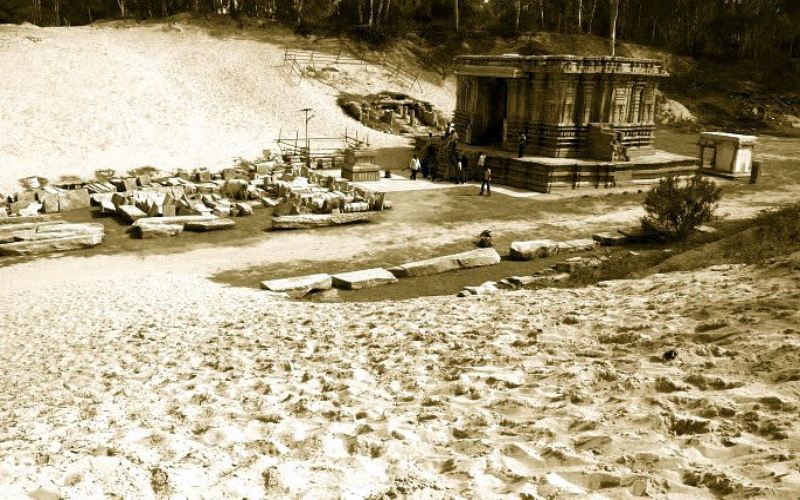
My father’s cousin, Sreenivas; his wife, Amitha; and son, Shiva; used to live in Mysore those days. Aunt Amitha was a perfect hostess. She used to accompany us during our tiny trips in and around Mysore. All of us enjoyed her guidance and the snacks offered by her. We visited the nearby Somnathapura and also the famous Talakkad Kshetram. The Gangas of Talakkad had once been the masters of Coimbatore. We visited the Shiva temples at Talakkad and these temples were surrounded by sand.
All of us went to the Melkote Thirunarayanapuram Temple. This temple is amongst the Pancha Narayana Kshetram-s of Karnataka. A 250-step climb took us to the Narasimha Shrine. My father was pleasantly surprised on being recognized as the grandson of S. N. Padmanabha Chetty, Salem by a temple priest who met us on the steps leading to the hill temple. We tasted the world-famous Melkote Puliyodharai and returned to Mysore. My mother told me about the long stay of Ramanuja at Melkote.
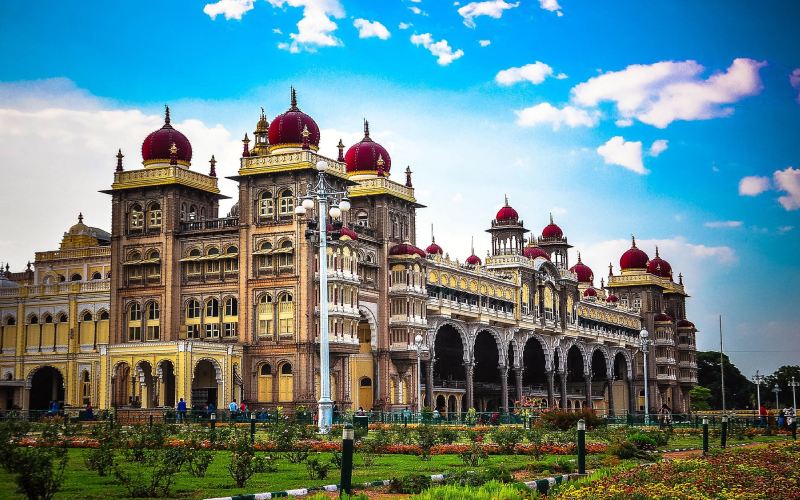
Back in Mysore, we relished the famous Mysore Masala Dosa and decided to wrap up the trip and move to Mangalore the next day. Of course, we visited the Kaveri Handicrafts Emporium. I learnt that R. K. Narayan was a resident of Mysore. Grandmother, Lalitha Bai, had told me about the Mysore Dasara. She had witnessed the Dasara during the reign of the Olliraaja (Krishnaraja Wodeyar) and Gunduraaja (Jayachamaraja Wodeyar).
Our hardy Ambassador car, MDG3833, took us to Mangalore via Markara. Our parents did a pooja to the River Kaveri at its point of origin, Thalakaveri. A tiny shrine and a medium-sized temple tank were the point of our pilgrimage. The car took us to Mangalore, and we ensconced ourselves in the luxurious Moti Mahal Hotel. Subramaniam Uncle and the two of us (My brother and I) took a bet regarding half-yearly marks. Both of us gave our projected marks and the winner had to be paid Rs. 10 & Rs. 50.

My father and Subramaniam Uncle had once been partners of Rajesh pictures, perhaps the hope that my father had on me made him name all his ventures with my name and one more venture was Rajesh Financiers with my mother as the proprietrix. My mother had assiduously saved every rupee received as gifts from the time of her wedding till the day I was named Rajesh. The amount thus saved was a little over rupees 10,000. It was a princely sum those days. My overjoyed father created a firm called Rajesh Financiers with my mother as the boss.
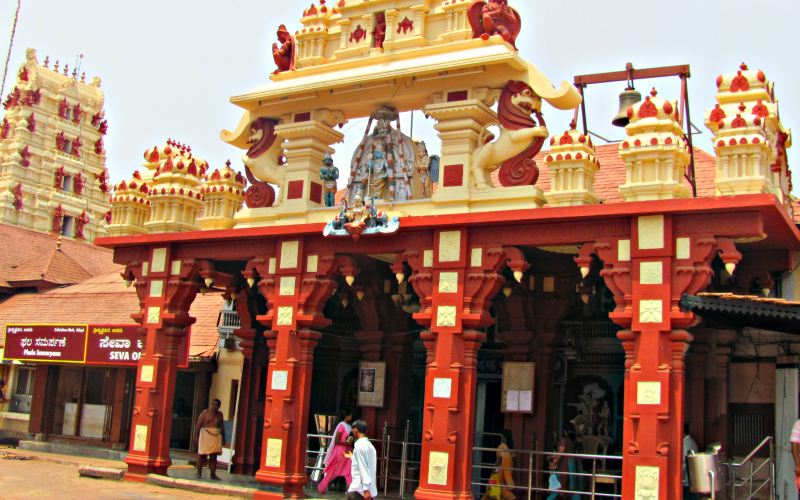
We enjoyed the continental food at Moti Mahal and began our trips the next day. The first stop was the Udupi Sri Krishna Temple. We had a good darshan of Lord Krishna and we came to know about Madhavacharya and Kanaka Dasa. My father’s scholarly maternal grandfather, S. N. Padmanabha Chetty, had been once received with due honors at this temple. A number of cows were loitering around Udupi and this place was well known for its cuisine.
Non-stop travel and different types of food had upset my stomach and I threw up in Udupi. Father took me to a fair-complexioned wee-spectacled doctor, and I was given a shot (Injecction). We moved over to Sringeri to have a darshan of Goddess Sharadha. Our family had already become deeply attached to Goddess Sharadha at Coimbatore.
We reached Sringeri at noon time and therefore had to wait in the temple guesthouse. Father told us that Rishyasringaragiri had become Shringagiri and then had turned to Sringeri. Suresh and I were super thrilled to know that we belonged to the Rishyasringa Gotra. We spent some time by looking at the fish that were frolicking in River Thunga and then proceeded to walk on a wooden bridge that took us to the hermitage of the Shankaracharya of Sringeri.
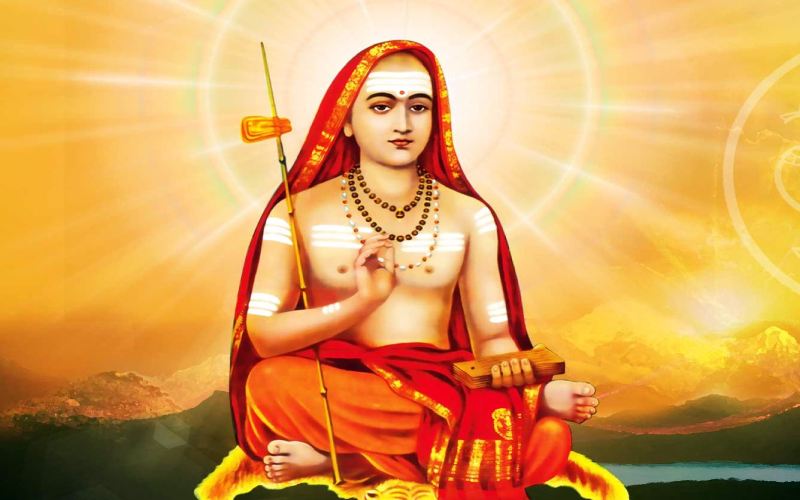
I learnt that Adi Shankara had chosen this place due to the kindness displayed by a snake towards a frog against harsh weather. This noble act had encouraged the great seer to establish the Dakshinamnaya Sringeri Sharadha Peetham with his disciple, Sureshwaracharya, as the first pontiff. His Holiness Abhinava Vidya Theertha Swamigalu was decorating the pontificate at that moment. The shrine of Sharadhamba was open in the evening and we had a very good darshan.
The next day kept us occupied with our visits to the Dharmasthala Manjunatha Temple and Kukke Subramania Temple. I learnt that several of the temples in Karnataka were in the habit of offering lunch to the visiting devotees. We were treated with a sumptuous lunch at the Dharmasthala. The temple at Kukke was very famous for removing naaga dosha. We went to Agumbe and witnessed the sunset.
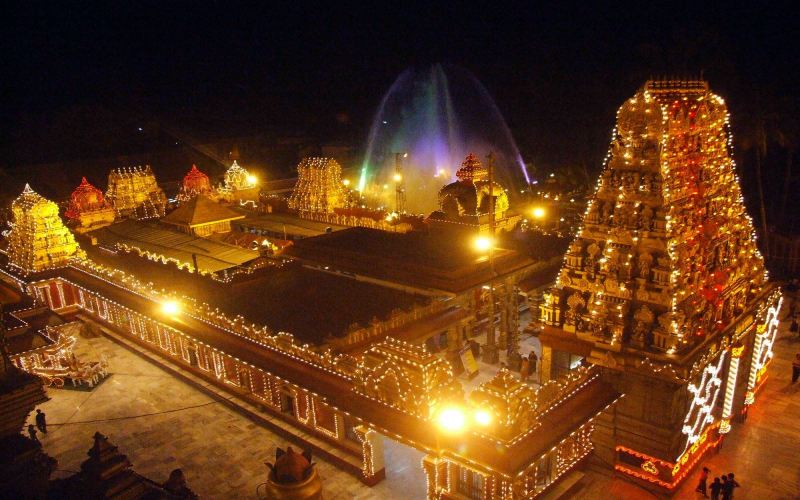
We offered our prayers at the Kateel Durga Parameshwari Temple. Worship of Durga Parameshwari or Durga Mahishasura Mardhini had been part of the local tradition of that part of India. Good prasadam-s and lunches kept us immensely happy. Father and Subramaniam uncle opined that a lunch system should be brought into operations at the temples of Tamil Nadu. This was to happen many years later during the period of Chief Minister J. Jayalalithaa. Mangalore had been blessed with a unique environment. We could not visit the Kollur Mookambika Temple due to time constraints.
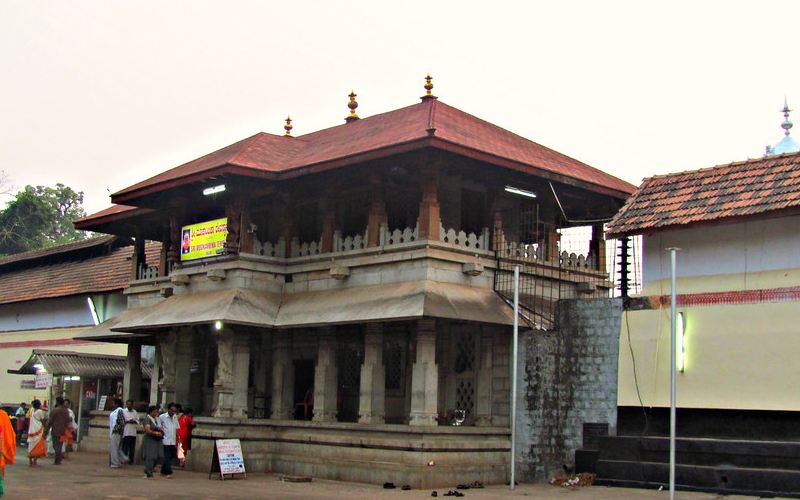
Father had planned this trip on the advice of his parents, Lalitha Bai and Krishnan. They had visited this region while attending the wedding of our relative, Vummidi Sreenivas (Vummidi Sarathy Jewellers) of Chennai. His father, Vummidi Parthasarathy Chetty, had been the energy behind the famous Vummidiar Jewelers along with Vummidi Pandurangayyiah. My father’s youngest aunt, Rathna Bai, had been married to Vummidi Adisesh, the first son of Vummidi Parathasarathy Chetty. I had been regaled with several stories connected with the Vummidiar household. Their kitchen had been managed by an orthodox vaishnavite cook those days.
I still remember my shutterbug father happily clicking away tens of photographs during the holidays. His uncles, Vishwanathan and Damodaran, had got him a Canon Camera while they undertook a world tour in 1969. This camera would produce 72 shots and father used to carry a few film rolls during each of our trips. These rolls will be processed on our return. We would then show these photographs to our family members while narrating the story of our trip. This would motivate other members of the family to follow our pattern.
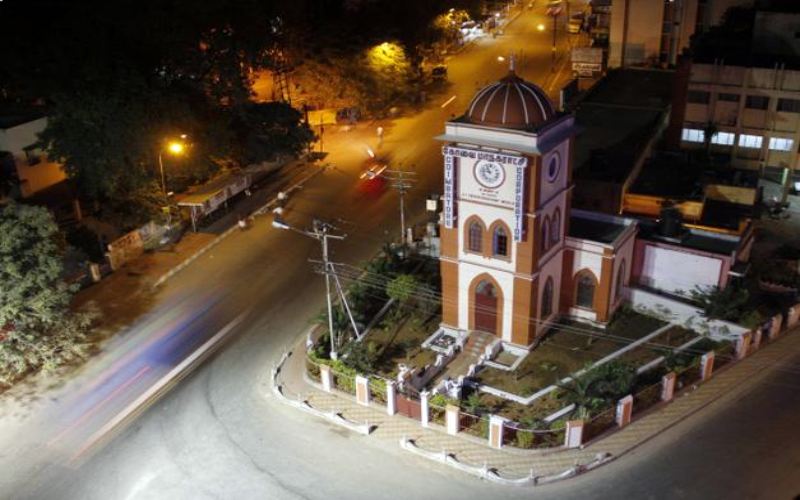
It was time to go back to Coimbatore and father decided to take a break at Kozhikode. We stayed at Hotel Maharani, and it was New Year's Eve, 31 December 1979. I overheard my father and Subramaniam uncle talking about the cabaret performance that was to take place in the hotel. We retired early and woke up on 1 January 1980 at Kozhikode. It was to be a good year and the drive back home was really pleasant. It was the time of the general elections to the parliament, and I witnessed the first-ever electoral campaign on the roads of Kerala. The sloganeering and the crowds carrying petromax lamps were new for Suresh and myself and we got really excited. We reached Coimbatore on the first of January and began to get ready for school on the next day.
Both Suresh and I got our exam papers. We scored really well and had won the bet with Subramaniam Uncle. On learning about our marks, he offered us Rs. 50 & 10. Much to our dismay, our parents insisted that Subramaniam Uncle call back his bet. However, he insisted and both of us were happy to receive the cash. I really do not know what my brother did with the money, but I kept my winning in a tiny Godrej Hundi. This was the beginning of my financial literacy, and this led me to open my first savings bank account at the Central Bank of India, Trichy Road, Coimbatore, when I was just 14 years old on 14 December 1982 (Account number – 3830). The grace of the deities propitiated by us during the trip to Mysore and Mangalore had helped me earn the first Rs. 50 in my life. This was to be a good augury for many good things to come.
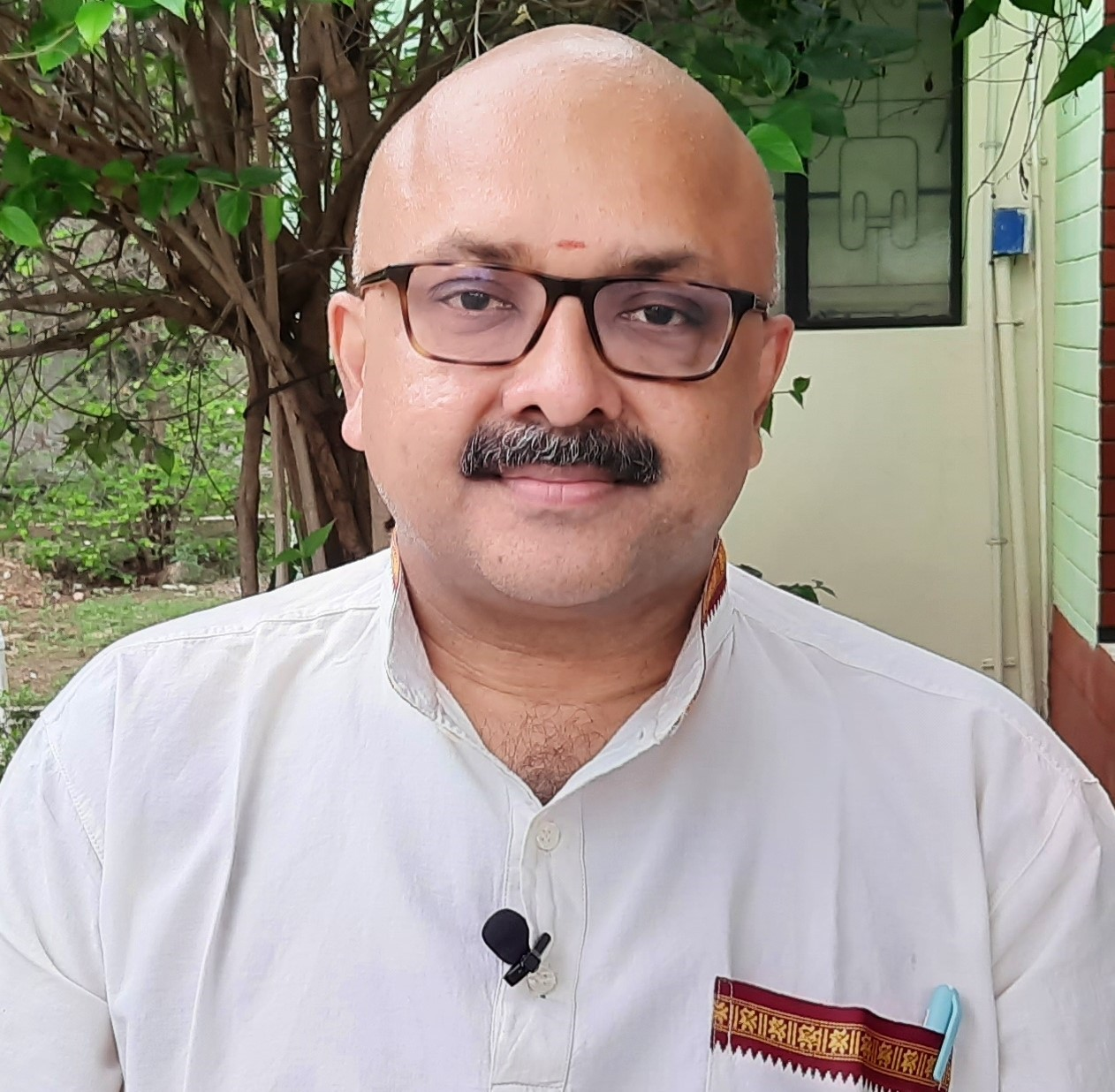
Mr. Rajesh Govindarajulu is one of the founding members of the Verandah Club Pvt. Ltd. He is a leading columnist, historian, jeweler, entrepreneur, and a heritage enthusiast who is earnestly working to revive the past in the light of the present. Experiential learning about the history of Coimbatore is his main course of interest and he is also a panel member of many colleges in the city.
NEXT ARTICLE

At the southernmost tip of this mesmerising ensemble lies the majestic Great Nicobar Island, boasting an impressive landmass of about 910 square kilom...

Bharath has always been a land traversed by spiritual masters/ Guru since time immemorial. These spiritual masters have always upheld the core princip...

South India contains its fair share of unique pilgrimage centres. These divine places of worship have a prominent Sthala Purana, devoted followers, di...